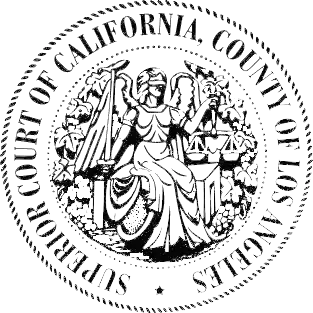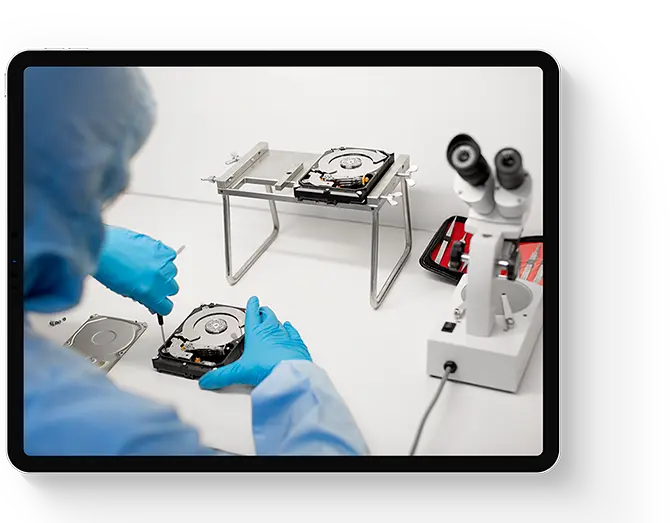RAID Data Recovery Services

Platinum data recovery engineers have successfully completed thousands of RAID data recovery projects and are considered among the most competent in the world. Our industry-leading RAID data recovery service offers complete coverage for all RAID systems, ensuring the highest level of data recovery.
Table of contents
Why choose us?
Solutions for failed RAID
We provide the highest chances of recovering data from crashed or failed RAID servers. As a certified RAID data recovery company, we have a dedicated RAID recovery laboratory.
Our secure in-lab recovery operations guarantee the safety of your hardware, as well as maintain the privacy of data. We have a cleanroom that limits the number of dust particles to offer the best possible environment for data recovery.

Trusted by






Our certifications








FAQ
We offer free diagnostics for customers who can wait two business days. Additionally, we have an emergency diagnostic option for $50 per drive, which will be completed within three hours.
RAID data recovery starts from $500 per drive. The total cost will depend on the following:
1) The number of drives in the RAID
2) The storage capacity of each drive
3) Whether it’s a logical or physical problem
4) The number of labor hours needed to recover data
5) The number of donor parts that need to be purchased
We never work with original drives; we always make a clone from each of the customer’s drives. That allows us to ensure the original drives and data are safe and secure.
All we need is your drives. We don’t work with RAID units/enclosures because they have the authority to make changes to drive’s sectors. Changes to the hard drive’s data or sectors can cause further damage. The safety of customer’s data is our number one priority. We will identify your RAID parameters and will assemble the RAID virtually using our data recovery equipment and software.
Emergency RAID recovery
We provide emergency RAID data recovery services to return you to your everyday business quickly. Whether you’ve suffered multiple disks failure, power surges, or rebuild errors, our team can recover data from any RAID failure.
We have a team of in-house RAID specialists to provide safe, quick, and efficient RAID data recovery services. We have an in-depth understanding of a RAID’s internal structure, including RAID configuration levels, firmware issues, file system structures, and more. Our knowledge, experience, and state-of-the-art infrastructure allow us to restore your data from any data loss scenario in RAID systems.

RAID 0 data recovery
The RAID 0 configuration is primarily used in external drives to achieve faster read and write speeds. RAID 0 combines two or more hard drives into a single logical unit. Video or music production companies commonly use this configuration to save time when copying large amounts of data to or from RAID storage. However, the disadvantage of RAID 0 is that the whole configuration will crash if one of the drives crashes.
RAID 1 data recovery
RAID 1 is a configuration where two drives are set up to mirror each other. All data is duplicated across the drives. This configuration provides data redundancy, which means that if one drive fails, the data can still be accessed from the other drive. RAID 1 is commonly used when data protection is more important than performance. Users lose speed when this configuration is used.
In RAID 1, there is a chance that one of the drives could crash long before the second drive, and the user may not see the log information about it, which means that only one drive will have the latest data.
RAID 5 data recovery
RAID 5 is a configuration of three or more hard drives combined together into a single logical unit. It is one of the most popular RAID configurations used in servers or enclosures due to its balance between performance and data redundancy. If one of the drives fails, it can be replaced with the new one without losing any data, as the missing data can be reconstructed from the parity stored in other drives.
RAID 6 data recovery
RAID 6 is similar to RAID 5 but with an additional level of data security provided by an extra drive. RAID 6 requires a minimum of four drives, and it can tolerate the failure of up to two drives simultaneously without losing any data. While it may seem unlikely that two drives would fail at the same time, this can happen in cases such as power surges. Additionally, if all the drives in the RAID were purchased at the same time and have similar lifespans, it is possible for them to fail in close proximity to each other. RAID 6 is commonly used in situations where data protection is the number one priority.
RAID 10 data recovery
RAID 10 is a combination of RAID 1 and RAID 0 that requires a minimum of 4 drives. In RAID 10, the drives are paired into two groups, and data is mirrored across each group, creating a RAID 1 configuration. The two mirrored sets are then striped together, creating a RAID 0 configuration. RAID 10 is one of the most expensive RAID configurations due to the high number of drives required for the setup. It is mainly used in high-performance environments. For example, to run databases on servers or on website hosting servers.
When is RAID data recovery needed?
The following are several reasons why you may experience data loss:
- Multiple drives failure
- Power surge
- RAID volumes won’t mount
- Configuration damage
- Addition of incompatible drives
- Hardware conflicts
- RAID array/controller card failure
- Controller card damage
- Files system corruption
- Server won’t boot
- Server registry configuration lost
- Rebuild failure
- Damaged striping
RAID capacity calculator
By the end of the data recovery process, you will need another RAID system to where recovered data can be copied. If you don’t have one already, check our proprietary RAID calculator to determine the cost and amount of usable space you can obtain when acquiring a new storage system. Additionally, our RAID recovery engineers will be happy to discuss different options with you to ensure that you won’t experience any data loss situations in the future.
DIY or not?
When a RAID configuration crashes, it is better to avoid rebuilding the data on your RAID servers, as this could lead to a change in metadata. Altered metadata may result in partial recovery, lost files and folder names, or an unrecoverable situation. Another reason why rebuilding may cause more damage is that one or more drives may have bad sectors. The RAID controller will show the drive as functioning, but it will get stuck on rebuilding the RAID once it reaches the area with bad sectors.
What if I still want to try DIY? In that case, it is recommended to create a clone of each drive and work with the clones, leaving the original drives untouched. Use only cloning software that has a feature that can skip the bad sectors.
Rely on RAID experts
Whatever the cause of your RAID configuration failure, rest assured that we have the skills, facilities, tools, and expertise to recover your data securely and as completely as possible. We understand that a fast, reliable, confidential solution is the only acceptable choice. Platinum Data Recovery rises to this occasion the first time– every time. If you require RAID data recovery services, please stop using your system and call us immediately. Further use, or data retrieval attempts could worsen the problem or even completely destroy the remaining data.
Call us for a free, no-obligation evaluation.
Call (800) 313-0044 or (323) 347-4444
